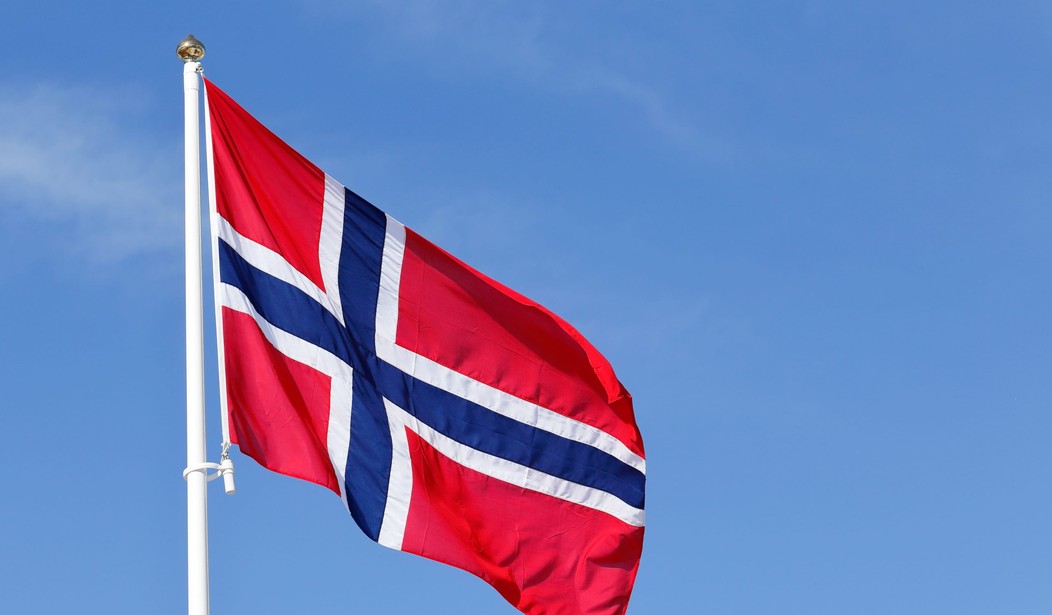Among the real-life Norwegian phenomena made gentle fun of in the 2012-14 Netflix series Lilyhammer, starring Steven Van Zandt as a New York mobster who has moved to Norway under the Witness Protection Program, were natteravnene — the “night ravens,” groups of unarmed citizen volunteers, including little old ladies, who patrol the night streets to talk wayward youths out of breaking the law. The concept is a quaint one, originating in a time when virtually all crimes committed in the middle of the Norwegian night were petty misdemeanors and when the perpetrators were Norwegian kids who, if confronted on the verge of a transgression by somebody their parents’ or grandparents’ age, could be expected to hang their heads in shame and go home.
No more: last Saturday night, a gang of “youths” in the Groruddalen area of Oslo, the physical descriptions of whom in the media made it clear that they were not ethnic Norwegians, threw rocks at a group of Natteravner. The next night, a youth gang roamed around Tøyen, another Muslim neighborhood of Oslo, and threw rocks at passersby. Minor crimes, perhaps — but, in the Norwegian context, marks of a sea change. I’ve written my share of pieces about the consequences of the Islamization of European cities, Oslo among them; not long ago, in a longish piece for City Journal, I chronicled the decline and fall of Muslim-heavy Groruddalen over the past couple of decades.
Don’t believe my reports? Fine — listen to what Yuri Snegirev has to say. Snegirov, a reporter for Rossiyskaya Gazeta, the Russian government’s newspaper of record, visited Norway recently and recorded his observations in a three-part series of articles. (Though I was alerted to their existence by an Aftenposten headline, that paper’s summary of Snegirev’s pieces was behind a paywall, so I hunted down the original texts, which, to my surprise, were made almost entirely comprehensible by Google Translate.)
Snegirev’s account of his visit focused largely on such dry matters as the competition between Russia and Norway over oil drilling and fishing in the Bering Sea. Far more interesting were his social and cultural observations, such as his shock at the price of beer (and, even more, the price of a bottle of water, even though Norwegian tap water is exceptional). Snegirov marveled at the range of accommodations on the short train trip into Oslo — the first- and second-class compartments, the quiet car, the family car (noisy kiddies). He was appalled by how costly it is to travel by car, given the high tax on imported cars, the hefty tolls (and the extra charge to drive into Oslo), and the staggering price of gas (the world’s highest). He highlighted one thing that I’ve griped about every winter since moving to Norway two decades ago: nobody shovels snow, so that the city sidewalks, except where underlaid with heating pipes, are covered for months at a time with deadly sheets of ice.
But Snegirev’s comments on these topics were only prelude to the more serious stuff. Yes, he may be a Putin lackey, but every detail rang true for me — and then some. Snegirev not only cited the “Romanian gypsies” who “sit on every block and beg” but even found a gypsy who spoke a little Russian. “Why should I work?” the gypsy asked him. Begging pays more: Norwegians are generous.
Walking down Oslo’s parade street, Karl Johans Gate, Snegirov took note of the ugly concrete objects that are intended to foil vehicular jihadists of the sort who terrorized Nice’s Promenade des Anglais in 2016 and London Bridge last June. He followed this, however, with a sobering reflection: such efforts notwithstanding, Norwegians have been brainwashed into a tolerance toward Islam that will ultimately “overwhelm and sink” it.
In one telling anecdote, Snegirov described a type of conduct I’ve witnessed repeatedly in Norway: he’s on a train from Hamar to Oslo on which all the seats are taken; although a number of able-bodied males (including young men in military uniforms) are seated, none of them stands up to offer his seat to any of the several elderly women (some of them weighed down by massive backpacks) who are forced to stand. But then a Pakistani man boards the train, and a red-bearded Norwegian immediately “jumps up … and invites the Muslim to sit down.” The Pakistani says no, but Redbeard insists. After the Pakistani sits, Redbeard stands with his back to the door, his facial expression making it clear that he feels he has “done a good deed.”
Snegirev also visited Grønland, a Muslim-heavy part of Oslo, where he met Yevgeny Dyakonov, a local from Uzbekistan. Describing Grønland as more dangerous than even the worst parts of Moscow (I wouldn’t know, having been in Grønland many times but never in Moscow), Dyakohov talked about the several times he’d been mugged by his own Muslim neighbors and explained that it’s no use to go to the police, who give you the brush-off. (Verdict, based on my own experience: true.) Dyakonov mentioned a fellow resident of his apartment building, an actual Somali pirate who lives on welfare and child benefits and whose rent is paid by the government. When Dyakonov asked why he doesn’t work, the man said: “I’m a born pirate! I never worked and I will not work!”
Coincidentally, I read Snegirev’s series following a week or two during which I’d watched several YouTube videos dating back to the Soviet era — President Reagan, in 1988, giving a pathbreaking address to students at Moscow State University in which he explained how freedom works; dissident Vladimir Bukovsky being interviewed by William F. Buckley on Firing Line shortly after his 1976 expulsion from the USSR. How poignant to see those glimpses of life during the Cold War, when the West — including Norway, a proud NATO member — stood foursquare for liberty and most of the poor souls trapped behind the Iron Curtain barely understood the meaning of the word.
Well, times have changed. In response to Islamization, Western Europe is trimming its freedoms (as demonstrated last Friday by Theresa May’s admission, during Question Time in the House of Commons, that free speech needs to be balanced out by “tolerance” for other people’s religions). Meanwhile, what used to be called Eastern Europe is standing up to Islam in the name of freedom. After viewing a few YouTube videos depicting that very different era, it can take a moment or two to snap back into the present — and to face up to the sobering reality that an eyewitness report from Norway published in an official Russian newspaper can, in fact, be considerably more candid about the country’s most urgent challenges than a piece in the same genre that might appear in, say, the New York Times.









Join the conversation as a VIP Member